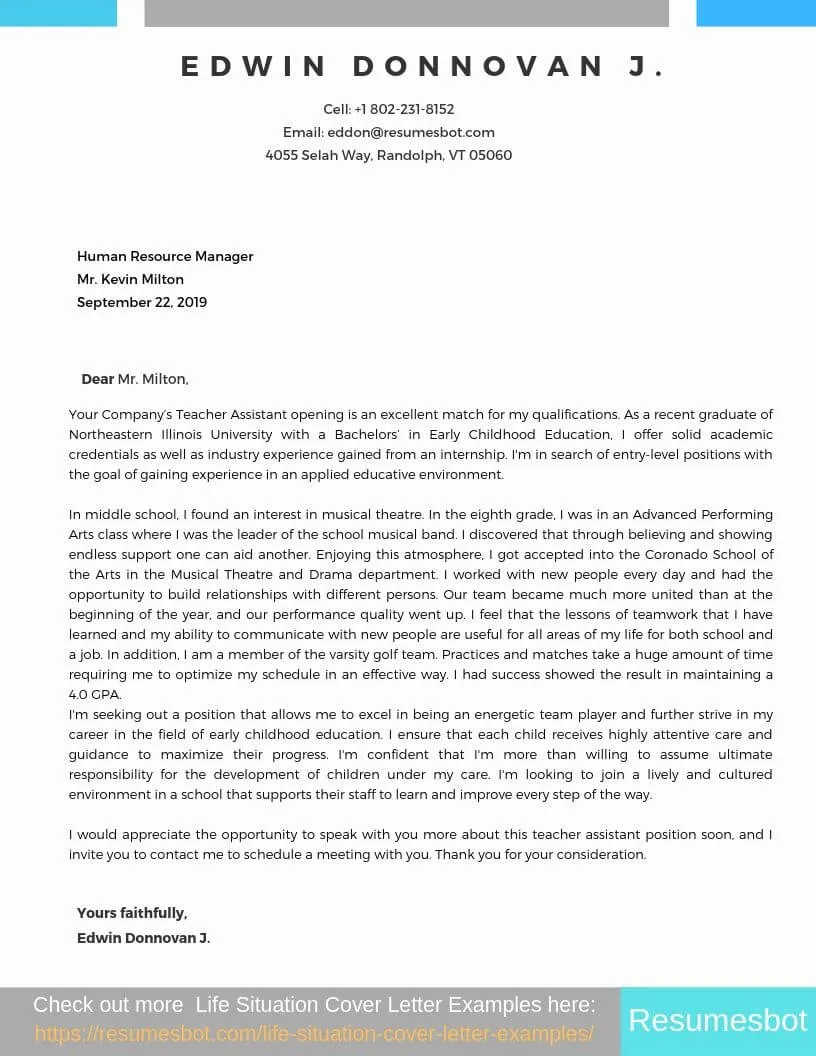Understanding the Teacher Assistant Role
Before diving into your cover letter, it’s crucial to understand the responsibilities of a Teacher Assistant. Teacher Assistants support lead teachers in the classroom, aiding in various tasks such as preparing lesson materials, supervising students, and providing individual or small-group instruction. They play a vital role in creating a positive and productive learning environment. Despite lacking direct experience, you can demonstrate your suitability by highlighting transferable skills, passion for education, and a proactive attitude. Researching the specific requirements of the school or district you’re applying to will also help tailor your letter and show your genuine interest.
Skills to Highlight in Your Cover Letter
Even without direct experience as a Teacher Assistant, you possess valuable skills. The key is to identify and showcase these transferable skills in your cover letter. These skills can be derived from previous jobs, volunteer work, academic achievements, or even personal experiences. The goal is to connect these skills to the requirements of the Teacher Assistant position, demonstrating your ability to contribute to the classroom environment and support the lead teacher and students.
Transferable Skills to Showcase
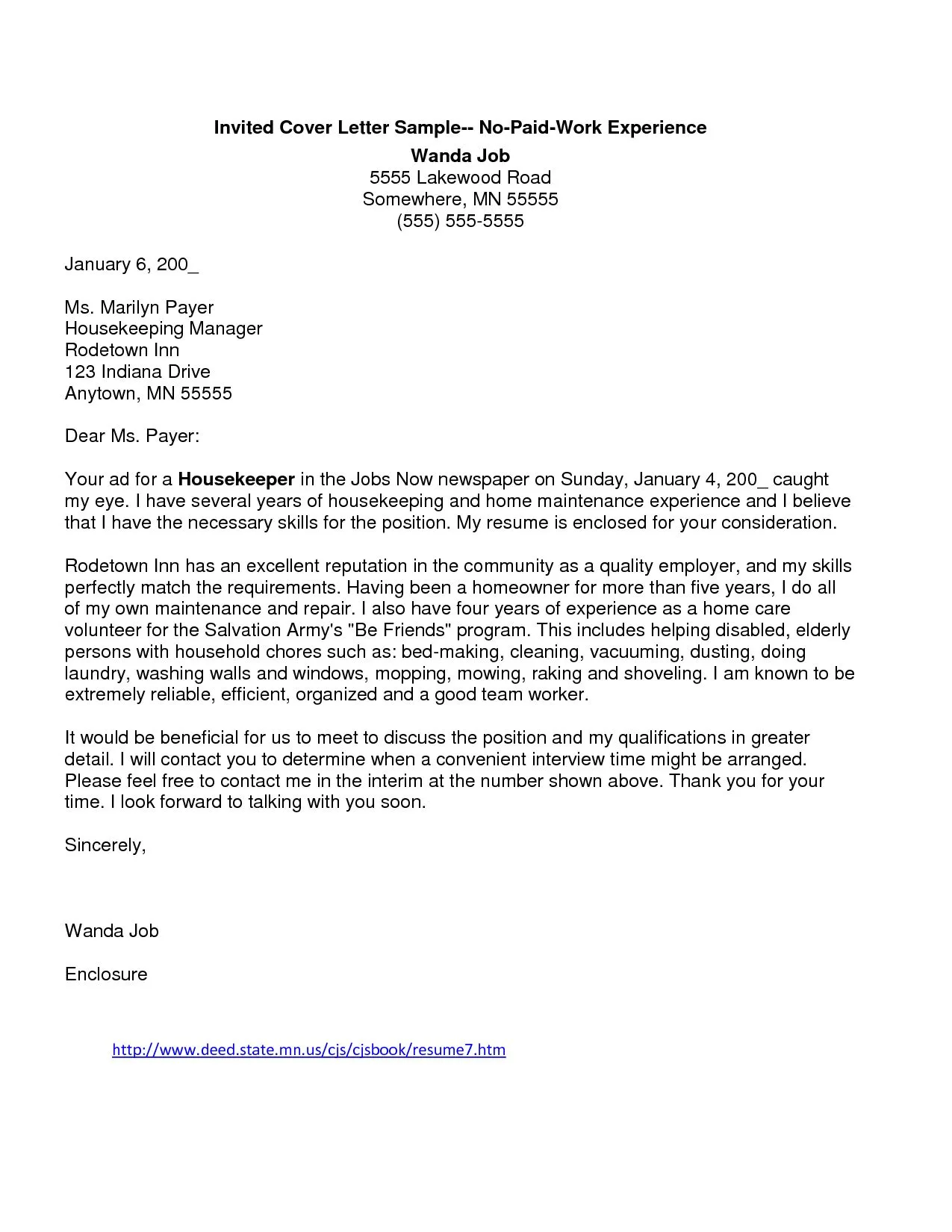
Several skills are highly valued in Teacher Assistants, even without prior experience. Consider these when writing your cover letter, providing specific examples of how you’ve utilized them. These are not limited, and you can find more according to your background. It’s essential to connect the skills with the role. Be precise and show how you will implement your skills in the position.
Communication and Interpersonal Skills
Effective communication is paramount in a classroom setting. Highlight your ability to communicate clearly and concisely, both verbally and in writing. Mention instances where you’ve successfully interacted with people of different ages or backgrounds. Showcase your ability to listen attentively, provide constructive feedback, and resolve conflicts, all essential for building positive relationships with students, teachers, and parents. Give specific examples, like ‘In my previous role as a camp counselor, I effectively communicated instructions…’ or ‘I was able to resolve arguments between campers and create a friendly environment’.
Organization and Time Management
Teacher Assistants often need to manage multiple tasks simultaneously, from preparing materials to assisting students with assignments. Demonstrate your organizational abilities by detailing how you’ve managed projects, met deadlines, and prioritized tasks. Mention any systems you’ve used to stay organized, such as calendars, checklists, or project management tools. If you’ve volunteered or worked in a role that required you to maintain order and handle various responsibilities, showcase this. For example, ‘During my university years, I was able to successfully manage several projects in different subjects at once and meet all the deadlines.’
Adaptability and Problem-Solving
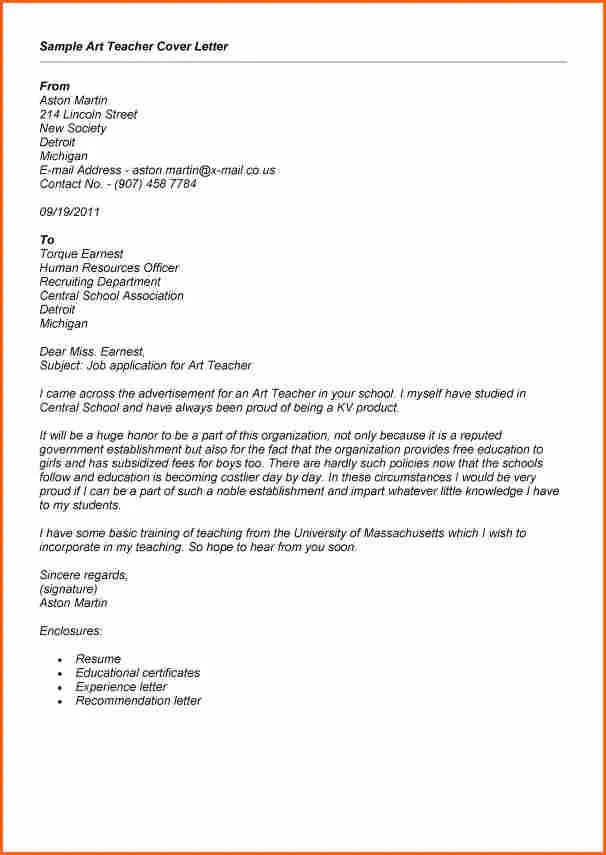
Classrooms are dynamic environments. Demonstrate your ability to adapt to changing situations, solve problems creatively, and think on your feet. Provide examples of times when you’ve overcome challenges, learned new skills quickly, or adjusted to different circumstances. Highlighting your problem-solving skills will show you’re prepared to handle unexpected situations in the classroom.
Formatting Your Cover Letter for Success
A well-formatted cover letter is just as important as its content. It should be easy to read, professional, and visually appealing. Pay attention to the layout, font, and spacing to ensure a polished presentation. A clean, organized format reflects your attention to detail and professionalism, which can significantly increase your chances of getting noticed by the hiring manager. Use a standard font like Times New Roman or Arial and maintain consistent formatting throughout your letter.
Header and Contact Information
Start your cover letter with your full name, address, phone number, and email address. Ensure this information is accurate and up-to-date. Below your contact information, include the date and the hiring manager’s name, title, and the school’s address. If you’re unsure of the hiring manager’s name, research it on the school’s website or LinkedIn, or address the letter to ‘Hiring Manager’.
Greeting the Hiring Manager
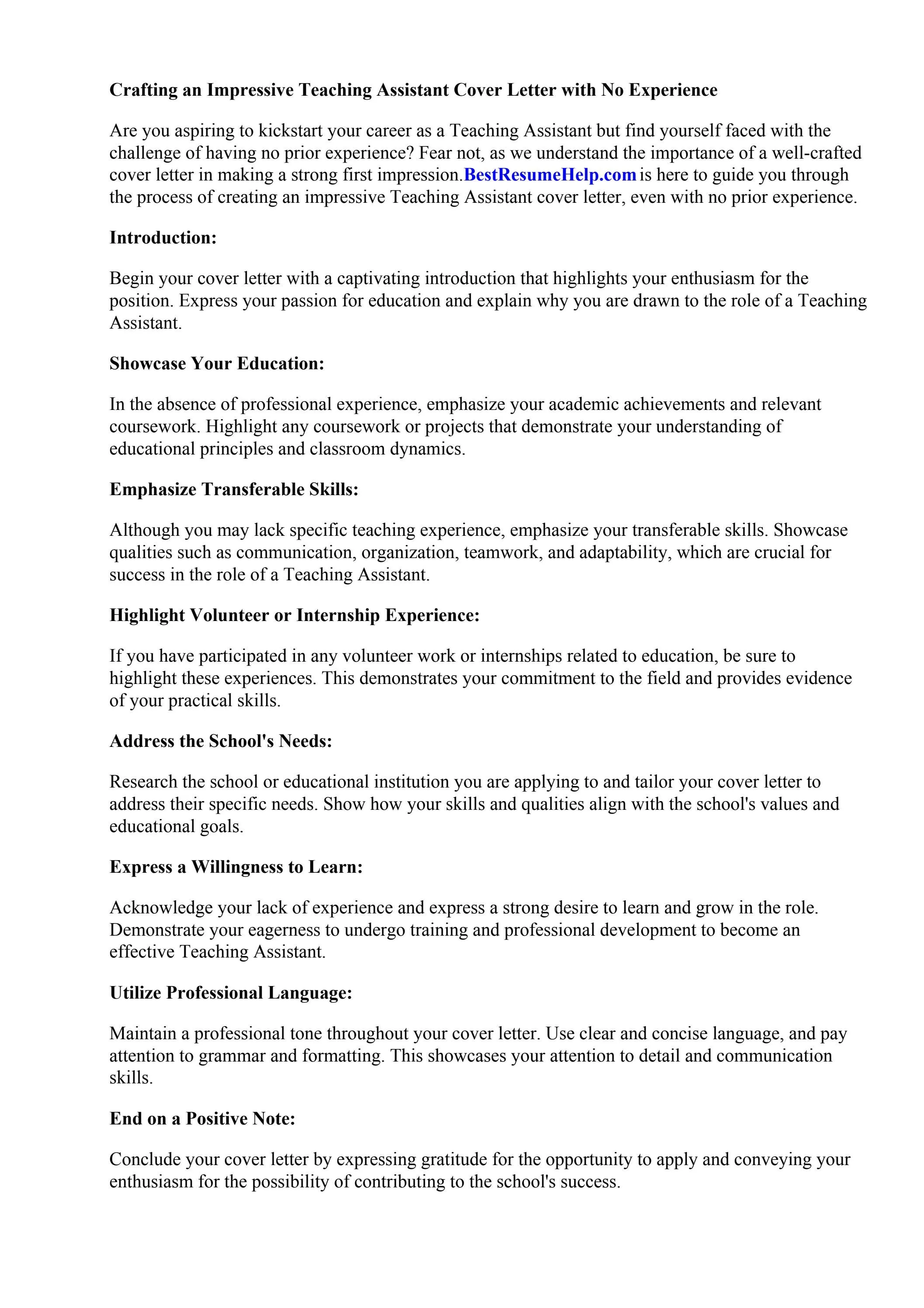
Start your cover letter with a professional greeting, such as ‘Dear Mr. /Ms. [Last Name]’ or ‘Dear Hiring Manager.’ Using the hiring manager’s name shows that you’ve taken the time to personalize your letter, which demonstrates your genuine interest in the position. Avoid generic greetings like ‘To Whom It May Concern’ if possible. If you can’t find the hiring manager’s name, use a greeting like ‘Dear Hiring Committee’ or ‘Dear [School Name] Hiring Team’.
Crafting a Compelling Introduction
Your introduction is your first chance to grab the hiring manager’s attention. Clearly state the position you are applying for and briefly mention how you learned about the opportunity. Express your enthusiasm for the role and the school. The introduction should be concise, engaging, and highlight your most relevant skills or experiences. It’s also an excellent place to express your understanding of the school’s values and mission.
Expressing Your Enthusiasm
Showcase your enthusiasm for education and the opportunity to work as a Teacher Assistant. Mention your passion for working with children and creating a positive learning environment. Explain what excites you about the school or district. Highlight any personal connection you have with the school’s values or programs. Your enthusiasm is contagious and will make a lasting impression on the hiring manager. A genuine display of interest can make you stand out, especially when you lack experience.
Highlighting Relevant Skills and Experiences
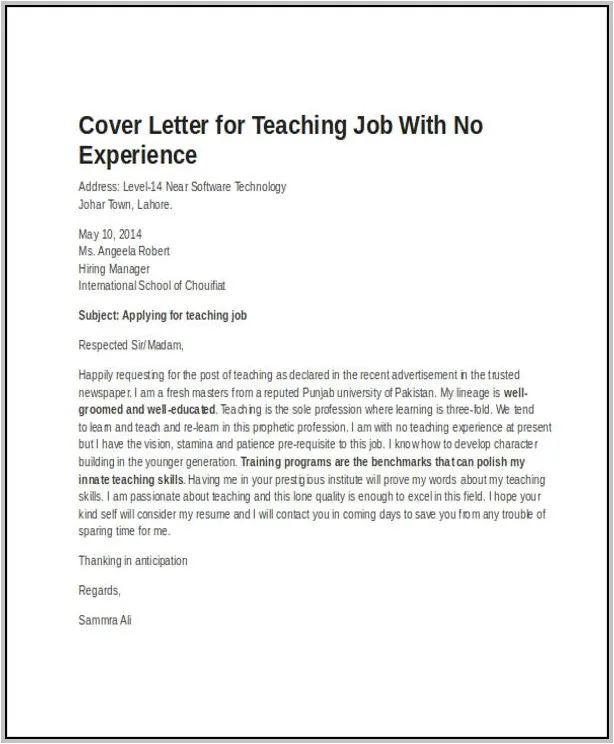
Use the body of your cover letter to elaborate on the skills and experiences you identified earlier. Provide specific examples that demonstrate how you’ve utilized these skills in the past. Quantify your achievements whenever possible, using numbers and data to show the impact of your actions. Tailor these examples to the specific requirements of the Teacher Assistant position, referencing the job description and the school’s mission. The goal is to make a clear connection between your abilities and the needs of the role. Provide clear and concise information that helps the reader to understand you and your capabilities.
Showcasing Volunteer Work or Shadowing
If you lack direct experience, emphasize any volunteer work, shadowing, or observation experiences related to education or working with children. Describe your responsibilities and the skills you gained. Highlight your contributions and what you learned from these experiences. Even short-term volunteer work can demonstrate your commitment to education and your willingness to learn. Be sure to include any relevant projects or tasks you worked on during your volunteer time, demonstrating your understanding of the educational environment. It will make you stand out among those who don’t mention them.
Emphasizing Your Passion for Education
Throughout your cover letter, express your passion for education and working with children. Talk about what motivates you to pursue a career as a Teacher Assistant. Mention your educational philosophy or values related to teaching and learning. Highlight any relevant coursework, training, or personal experiences that have influenced your interest in education. The stronger your passion is, the more likely you are to get hired. Passion can compensate for a lack of experience. Consider all of these factors when writing your cover letter.
Closing Your Cover Letter
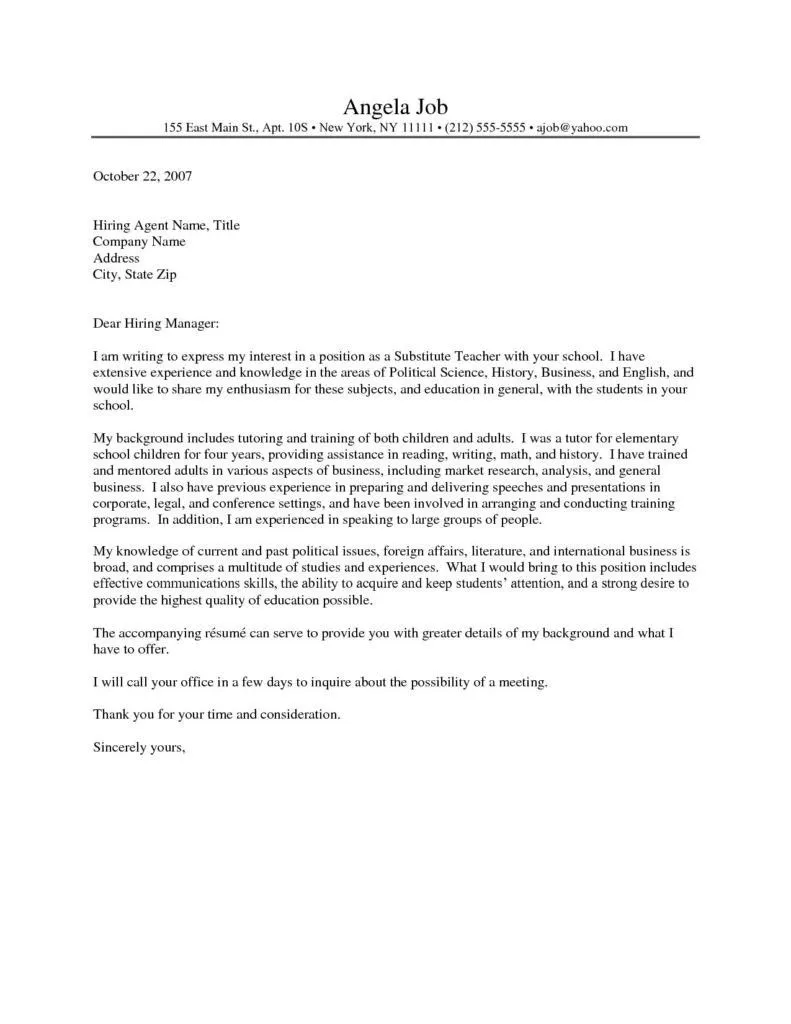
Your closing should summarize your interest in the position and express your gratitude for the opportunity. Reiterate your enthusiasm for the role and the school. Express your confidence in your ability to contribute to the team. Thank the hiring manager for their time and consideration. End with a professional closing, such as ‘Sincerely’ or ‘Best regards,’ followed by your name and signature (if submitting a physical copy).
Thanking the Reader and Offering Availability
Thank the hiring manager for considering your application. Express your appreciation for their time and the opportunity to learn more about the position. Indicate your availability for an interview and provide your contact information again to make it easy for them to reach you. This demonstrates your eagerness and your commitment to the role. It also shows your proactive attitude and good manners.
Proofreading and Editing Your Cover Letter
Before submitting your cover letter, carefully proofread and edit it. Check for any grammatical errors, spelling mistakes, and typos. Ensure your writing is clear, concise, and easy to understand. Have a friend or family member review your letter for feedback. A polished, error-free cover letter reflects your attention to detail and professionalism, significantly increasing your chances of success. Proofreading is an essential step that can’t be skipped.
Common Mistakes to Avoid
Avoid common pitfalls that can undermine your application. These mistakes can be avoided by paying close attention to detail. Common mistakes can make your cover letter look unprofessional, and you won’t get a chance to interview for the role. So, make sure to avoid them. These mistakes are easy to spot, but they can damage your image. Avoid these mistakes to make a strong impression.
Using a Generic Cover Letter
Avoid using a generic cover letter that is not tailored to the specific position or school. Generic letters lack personalization and fail to demonstrate your genuine interest. Research the school and the specific requirements of the Teacher Assistant role. Customize your letter to highlight the skills and experiences most relevant to that position. Show that you’ve taken the time to understand the school’s values and mission. Make sure you are not using a template without any modifications.
Focusing Solely on Lack of Experience
Don’t dwell on your lack of experience. While it’s essential to be honest, focus on your transferable skills, passion for education, and willingness to learn. Frame your experiences in a positive light, highlighting your potential and enthusiasm for the role. The goal is to demonstrate what you can bring to the table. Focus on what you know, and show that you’re eager to gain experience.
Failing to Tailor the Letter
Customize your cover letter for each position you apply for. Generic letters fail to impress and demonstrate your lack of interest. Always address the specific requirements of the role and the school’s values. Tailor your examples to match the job description. Demonstrating that you understand the school’s needs can set you apart from other candidates and help you get noticed. Always research the school and its values to increase your chances of making a good impression.
Example Cover Letter for a Teacher Assistant (No Experience)
Here’s an example you can adapt to create your own cover letter. Remember to replace the bracketed information with your details and tailor it to the specific job you are applying for. This is just an example; you need to adapt it to suit your own case. Always mention your specific skills and explain how these skills can contribute to the role. If you add personal details, this can increase the chances of being hired. Never copy the example completely, or you will get rejected.
Template for Teacher Assistant Cover Letter
A template can help you structure your cover letter, but always customize it. Start with your contact information, the date, and the hiring manager’s details. Then, include a professional greeting. In the first paragraph, state the position you are applying for and how you learned about it. The second paragraph should focus on your skills. The third paragraph is for explaining your volunteering work, if you have any. Finally, you must thank the reader and show your willingness to be interviewed. Remember to adapt this template to your situation.
Final Tips for Teacher Assistant Cover Letters
Before submitting your cover letter, proofread it meticulously. Ensure your letter aligns with the job description. Research the school and its values. Tailor your content. Express your passion for education and highlight your transferable skills. Customize each letter. Show your willingness to learn. Always use a professional tone. Make sure your letter is easy to read, and your contact information is accurate. By following these tips, you can greatly increase your chances of landing an interview and securing the Teacher Assistant position. Good luck with your job application!
